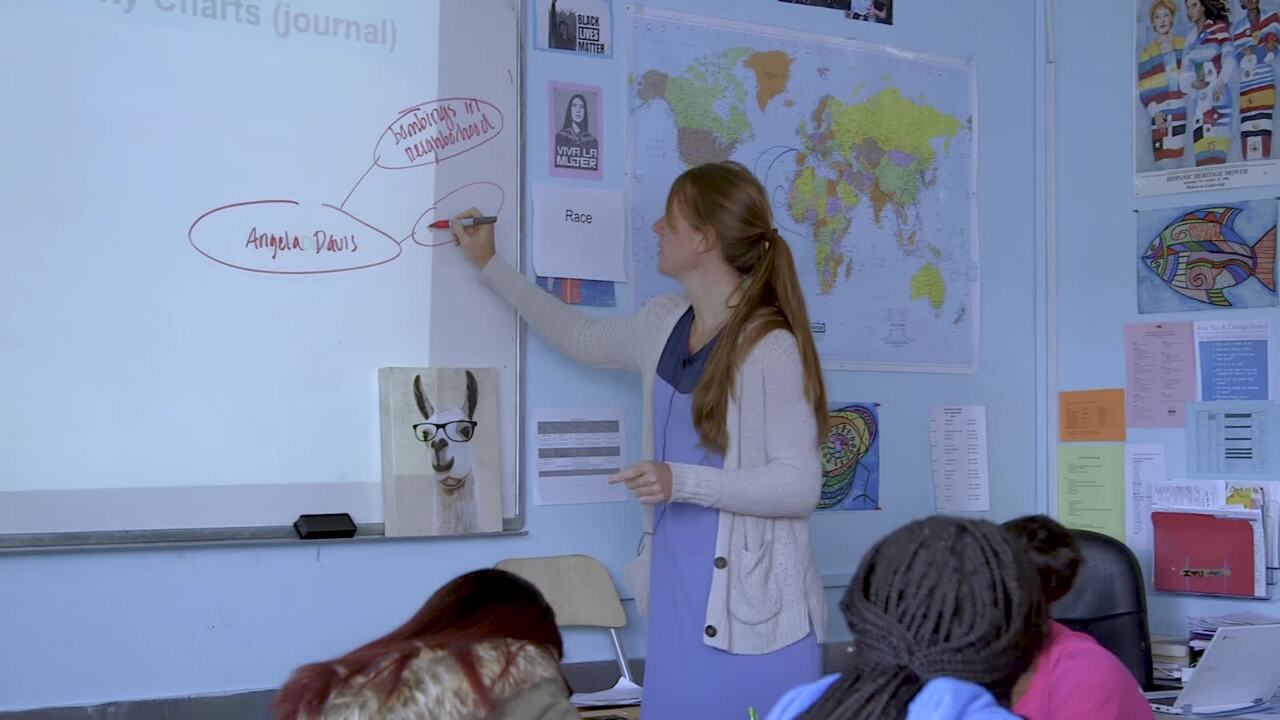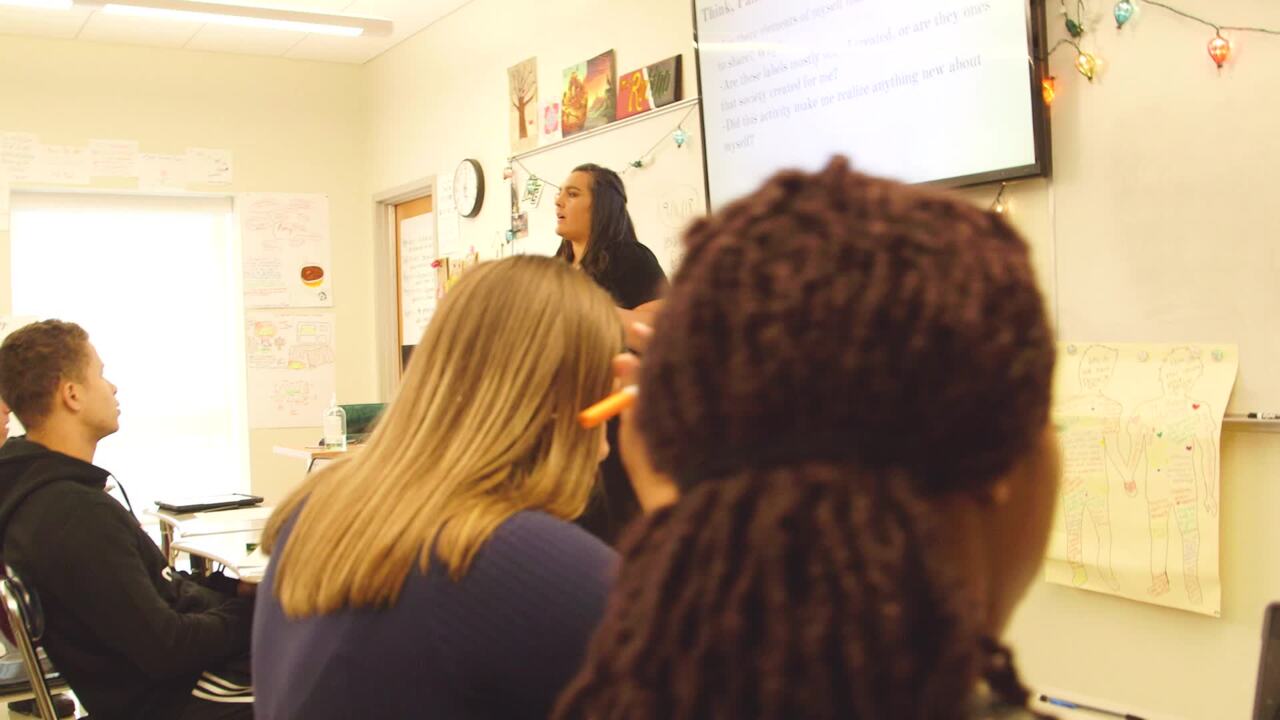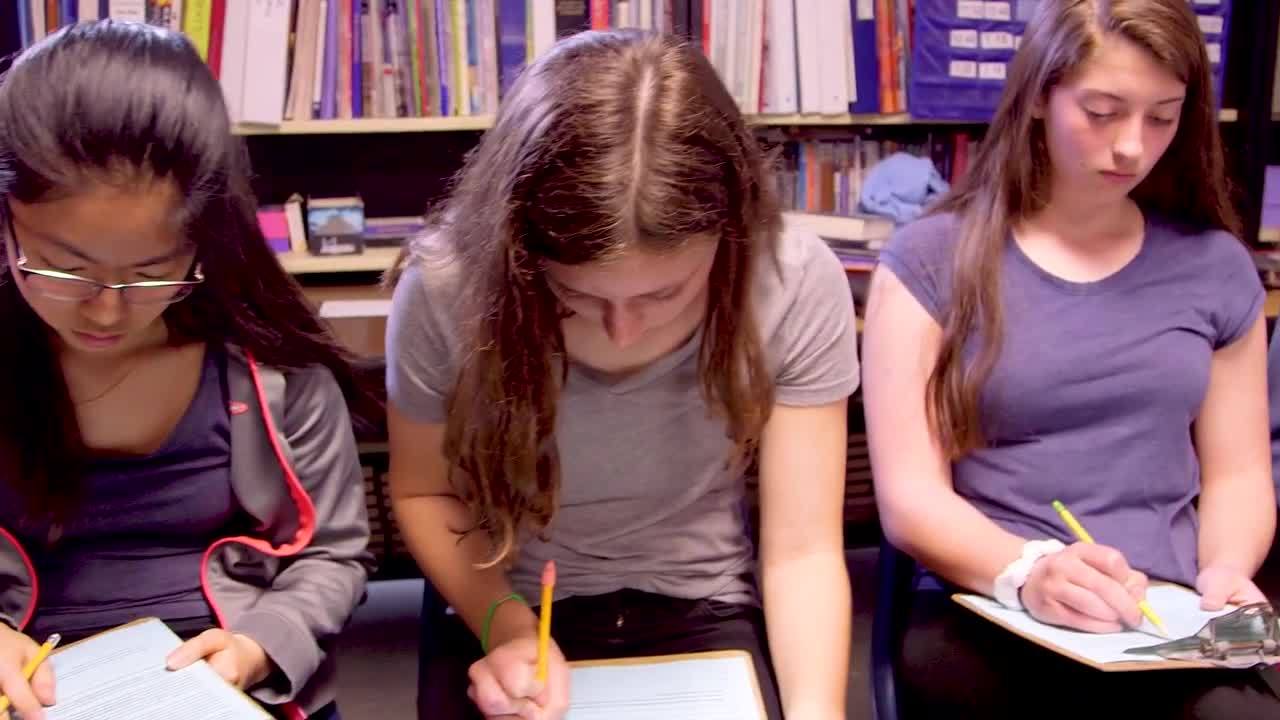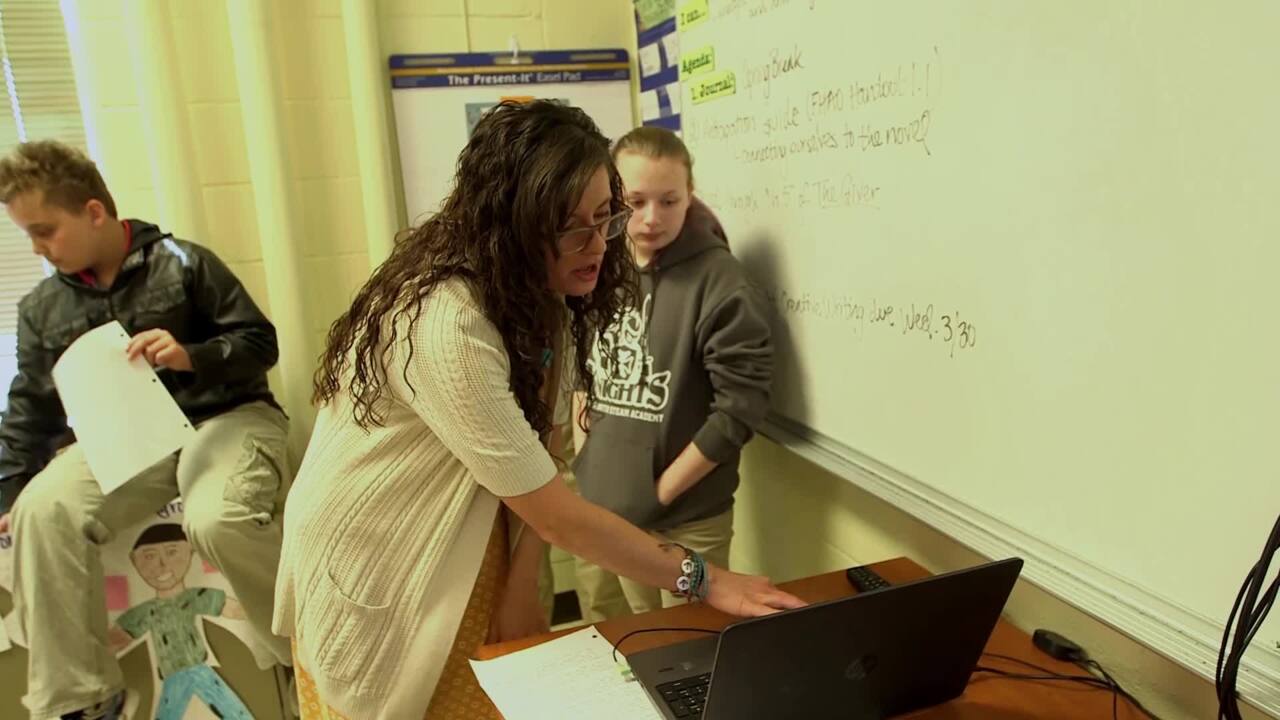In this section, students will study the aftermath of the guilty verdict in the trial of Tom Robinson, the struggle of Scout and Jem to understand it, and the reflections on democracy and citizenship by the adults who try to help them. The resources in this section have been included to help students consider the legacy of racial violence and justice in Southern communities, and learn about the ways that some communities have attempted to come to grips with their histories, in order to seek justice and healing.
A typical gallery walk, the students will have silent time to view a series of documents at stations around the classroom, or maybe down a hallway, if there's a hallway available. But I modified it slightly, just so that we could get a little bit more in-depth with the five documents about apologies and reconciliations. So instead of doing a gallery walk, I'm going to do a jigsaw style. As the students come in, I'm going to hand them a random number. And it's going to assign them to one of the five documents.
So that group of three or four students will be charged to be the expert, if you will, on that document. They'll read it together. They'll come up with the most important points. Each document has one to three connection questions that the group will discuss and provide a quick answer to. Once everyone's had 12 to 15 minutes to work on that part, they'll all have a seat. And then each document will be called up one at a time for the group to give us the recap. And that's going to be a little bit better than having the kids just spend a minute or two on each document, because as the group explains, they'll be able to fill the other groups in a little bit more in depth.
OK. Who has a good memory? Everybody? Nolan? Erica? Could either of you just give a short-- just real quick recap of the gist of the five documents that you all looked at the Friday before spring break. Yes, ma'am.
So, a few of the documents had more specific cases. Like, I remember one of the documents had the Scottsboro Boys on there. And it had the different effects of their-- some people's version of justice. And it talked about the definition of justice itself, and the difference between justice and closure. And it talked about how the people in the community were affected, and the effect on injustice as a whole.
Good. Excellent. So, if you would, take your paper, that you just got back, and head to your document.
Then it states that the Scottsboro Boys have finally received justice, figure 3.
No. I disagree.
Yeah, I said-- I said I agree and disagree, because although we know the truth today, they were still harshly punished, and it does not matter how long ago it was. There was still pain.
I said I disagree. I think the boys that were released didn't even have justice, because there's still hatred throughout the community that could really affect them, and drive them to do things they would never do, like suicides would be a factor in that. And definitely the boys-- I think there are a few that they killed. I think. So I think there were a few that they killed, and they definitely don't receive justice because--
They're dead.
Their life ended early because of a false accusation.
I checked on most groups and kind of already asked you all some of the questions that you're going to answer for the class. And everybody seems to be on track with good responses. So go back to your seats, unless you're 6.2. 6.2 stay over here. All right. Document 6-2 is on truth and reconciliation commissions. They're going to tell us all about that. They had one question. I know some of you had two or three questions. But they had a long document. Their one question: According to the Greensboro Project's mandate, what actions can help provide healing and hope to their community? What actions might impede healing and hope? And do you agree?
So according to the Greensboro Project mandate, healing and providing healing and hope would be brought by coming together, just acknowledging people's feelings, also discovering and disseminating the truth.
Then they clarified all the confusion that was in the community and what actually happened, instead of people just like, oh, it was an accident, or whatever.
Yeah.
Class, just a quick show of hands, do you all-- raise your hand if you think that the town, Greensboro, and the mandate did enough. That's kind of what I figured. I didn't think you guys would think that's enough, and I agree. Anyone just want to give a quick reason why you don't think that was quite enough? Erica?
Well, it would definitely have helped if they had done it much earlier. Like, closer to when the situation actually occurred. Because that would have started-- that might have started some conflict but it might have also settled some down, because most people realize that racism isn't the way to go. And it would have been nice to realize that sooner than we have already.
Good. Good. I like that. 6.5, reparations.
Reparations, they can gave some type of financial help or it can give compensation, but it doesn't make it right. They failed to accomplish to erase the memory of what happened or take the pain away. They're trying to give you things, so you won't be as angry as you were before. It causes closure, but it does not fully erase the pain.
So it's essentially-- some people may look at it as trying to bribe people to get over something.
Or pay you off.
Pay you off. Right? So a lot of times, reparations are looked at as a negative thing.
Basically-- that means that sometimes they're just a symbol. You know, it's like saying, hey, you know, we're wrong. We know we're wrong. This is what we-- we're trying. This is what we can do to try and help you.
Thank you. And then how would you guys answer that last question? Again, that says, how long do we have to pay for the sins of our forefathers?
I would answer that question by saying that until people feel like it has stopped being an issue, like, those acts stop happening, there can be-- you can heal, once those acts stop happening, because if there is more actions, like they're happening, the healing will never start. And you will still have a scar, and still with a scar. Like a lot of times you have a bad scar that hurts on your arm, you can't forget it's there.
Right.
But, if it heals, and it's still there, you won't notice it as much. And this is how you forgive the forefathers.
I think that in-- almost restating what they had said to me, and asking more probing questions, I was able to get a good bit of them to understand the difference between justice and healing. Some still had, kind of, this up-in-the-air thinking it was the same thing. But as we got to each document station, I think that the students had a little bit better understanding that there is a true difference.
And that it's in the eye of the person who the injustice was done against. If reparations were that person's way of having their closure and feeling that justice was done, that may be different from the way that someone else took it. And I think that they did start to realize that it's in the eye of the beholder, whoever needs to have these feelings, is the one that's going to make that decision.






